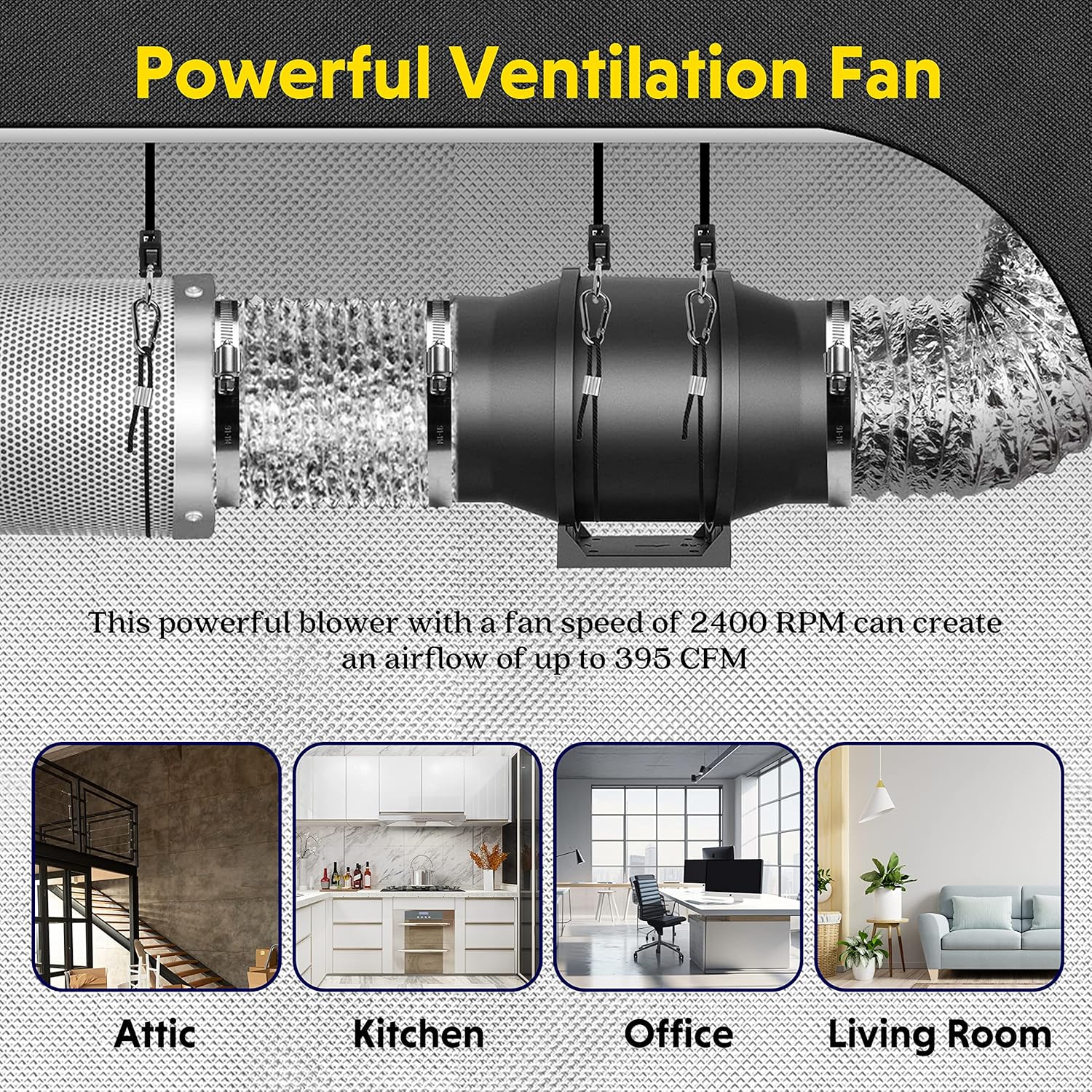

Views: 0 Author: Site Editor Publish Time: 2025-06-05 Origin: Site









Selecting the correct sizeventilation fanis key to achieving optimal air quality, energy efficiency, and comfort in any space — whether residential, commercial, or industrial.
In this guide,AOSUN explainshow to size a ventilation fanstep-by-step, helping you make informed decisions for your next project.
✅ Ensures adequate air exchange
✅ Maintains indoor air quality (IAQ)
✅ Prevents moisture buildup and mold
✅ Enhances occupant comfort
✅ Reduces energy waste
✅ Helps comply with building codes
CFM= Cubic Feet per Minute (used in US)
m³/h= Cubic Meters per Hour (used in Europe/Asia)
These units measure how much air the fan moves.
ACH refers to how many times the air in a room is replaced per hour.
Recommended ACH depends onroom type and use(see table below).
Forrectangular rooms:
Length × Width × Height = Room Volume
Example:
A 5m × 4m × 2.5m bathroom →
5 × 4 × 2.5 =50 m³
| Room Type | Recommended ACH |
|---|---|
| Bathroom | 10–15 |
| Kitchen | 15–30 |
| Office | 6–12 |
| Living room | 6–10 |
| Bedroom | 4–8 |
| Warehouse | 6–20 |
| Workshop | 15–30 |
| Gym / Fitness | 10–20 |
To convertm³/h → CFM:
CFM = m³/h ÷ 1.699
To convertCFM → m³/h:
m³/h = CFM × 1.699
Choose aventilation fanrated for at least the required airflow:
✅ Factor in duct losses (add ~10–20%)
✅ Consider noise level requirements
✅ Ensure compatibility with duct size
✅ Always round up airflow to ensure sufficient ventilation
✅ For long duct runs → select fans with higher static pressure capability
✅ For noise-sensitive spaces → choose low-noise or EC motor fans
✅ For retrofit projects → verify available installation space
❌ Using undersized fans → poor ventilation, mold risk
❌ Oversizing excessively → noise & energy waste
❌ Ignoring duct layout → airflow loss
❌ Not accounting for special equipment (e.g. in kitchens, workshops)
AOSUNFAN assists:
✅ HVAC contractors
✅ Architects and designers
✅ Builders and developers
✅ OEM partners
We provide:
✅ Fan sizing consultation
✅ Technical data sheets
✅ OEM customization
✅ Project-based product recommendations
Explore ourProducts pageorcontact us here.
Our team can help you:
✅ Select the optimal fan for your space
✅ Customize airflow performance
✅ Ensure compliance with project requirements
Proper fan sizing ensureseffective, efficient, and compliant ventilation— saving you costs and ensuring occupant comfort.
AOSUNFAN is ready to support your ventilation projects — contact us today for expert guidance!
What Is an Air Curtain and How Does It Work?An air curtain is not just a fan above a door.It creates an invisible air barrier between two spaces.This barrier helps control temperature, air quality, and energy use.When the unit turns on, it pushes a fast-moving air stream downward.
Exhaust fans play a critical role in maintaining indoor air quality and comfort by expelling unwanted heat, humidity, and airborne contaminants from enclosed spaces. These mechanical ventilation devices are widely used in residential, commercial, and industrial settings to ensure a healthy and comfo
In an era where energy efficiency and indoor air quality are paramount, heat recovery ventilators (HRVs) have emerged as essential components in modern building design. These systems play a pivotal role in reducing energy consumption while ensuring a continuous supply of fresh air.
In an era where energy efficiency and indoor air quality are of paramount importance, understanding the mechanisms behind modern ventilation systems is crucial. One such advanced system is the HRV heat recovery ventilation system. This technology not only ensures a constant supply of fresh air but a
Balancing a heat recovery ventilation (HRV) system is a crucial step in ensuring optimal indoor air quality and energy efficiency. An HRV system not only provides fresh air but also recovers heat from exhausted air, making it an essential component in modern buildings aiming for sustainability. Desp
In today's competitive business environment, maintaining energy efficiency and ensuring customer comfort are paramount. One effective solution that addresses both concerns is the installation of commercial air curtains. These devices create an invisible barrier of air over doorways, helping to maint
In modern ventilation systems, the choice of the appropriate fan is crucial for maintaining optimal air quality and ensuring energy efficiency. Two commonly used types of fans are the inline duct fan and the extractor fan. Understanding the differences between these two can significantly impact the
In modern ventilation systems, the choice of the appropriate fan is crucial for maintaining optimal air quality and ensuring energy efficiency. Two commonly used types of fans are the inline duct fan and the extractor fan. Understanding the differences between these two can significantly impact the
Proper ventilation is a crucial aspect of maintaining indoor air quality and ensuring a comfortable living or working environment. Among the various ventilation solutions available, the inline duct fan stands out for its efficiency and versatility. However, to maximize its benefits, it is essential
The ventilation fan is to replace the dirty air in the room to the outside, and then bring the fresh air from the outside into the room. The ventilation fan is relatively simple and easy to install. It's practical and not too expensive. If there is a lack of air circulation in the room, the kitch
